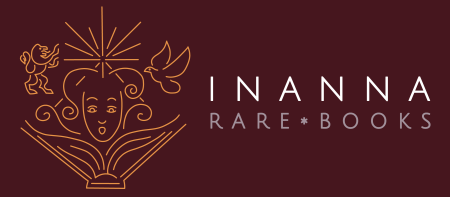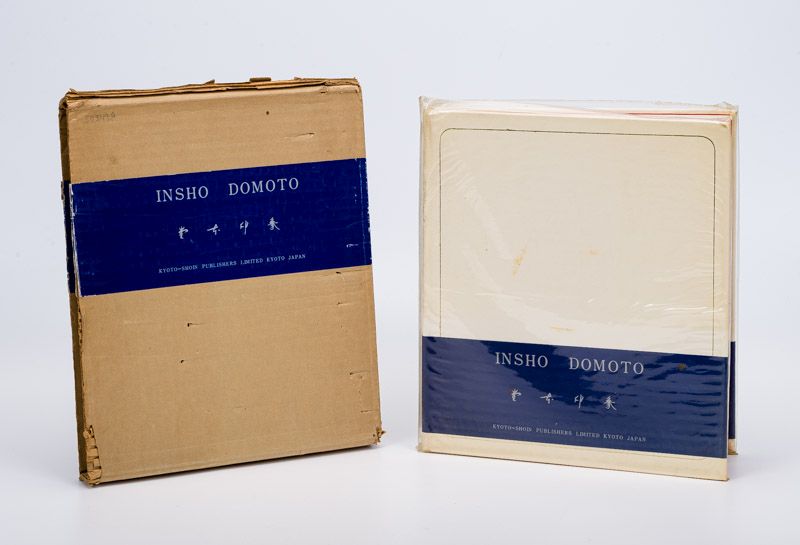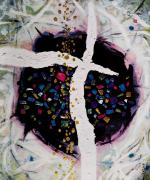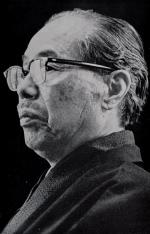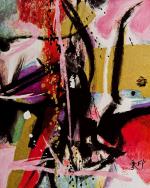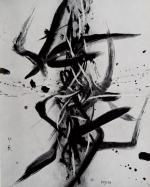Domoto, Insho Domoto.
Insho Domoto. [With an essay by Soichi Tominaga: “Insho Domoto and his Art” and an essay by Shinzuichi Simomise: “Problems of Insho’s Art” (both essays in japanese, french and english) / Also an essay in french: “La voix du Nord” – Insho ou la Barbarie D’Occident (in french only)].
Japan, Kyoto-Shoin Publishers Limited. 1965. 28.8cm x 25.5cm. 124 unnumbered pages. With 80 illustrations (10 in colour) and a lithograph on blue paper bound before the halftitle. Original Hardcover with protective Mylar in slipcase. Excellent condition with only minor signs of external wear to the slipcase.
Insho Domoto (1891-1975). Insho Domoto was born in Kyoto in 1891, with his given name Sannosuke.
After he graduated from Kyoto City School of Arts and Crafts, he was originally trained in craft design. He began his career by drawing patterns for traditional textiles, Nishijin-ori. But his ardor for being a Nihonga painter made him enter Kyoto Municipal Special School of Painting (Kyoto Shiritsu Kaiga Senmon Gakko), and pursued his studies as a Nihonga painter between 1918 and 1924.
He also took private lessons from Suisho Nishiyama (1879-1958), the influential pupil of Seiho Takeuchi.
In 1919, after “Landscape of Fukakusa” was accepted for the 1st TEITEN exhibition, Insho had been cutting a brilliant figure as a young painter. He won a special commendation for his picture “Women playing Football” in the 3rd TEITEN exhibition.
A large painting on Buddhist themes “Kegon” which won an award (Teikoku-Bijutsuin Sho) in the 1925
Teiten exhibition was among his early works to win distinction and establish his reputation as a specialist in large-scale religious paintings.
With this success, Insho began to receive comissions to paint the ceilings and fusuma of distinguished Buddhist temples in the Kansai area. Insho completed over 600 such commissions in his lifetime. He had established his own private painting school, called “Tokyusha”. He was also a professor at Kyoto Municipal Special School of Painting, and trained the younger generation.
In 1944 he became a member of the Imperial Art Academy. In 1950 He became a member of Geijutsuin. After 1955 he pursued abstract expression, and it stimulated intense for Japanese painting circles. He invited many International exhibitions. In 1961 he had received the Order of Cultural Merit. In 1966 he established Domoto Museum of Fine Arts to display his works of art by his design.
Insho cultivated a strong interest in history, aesthetic theory, and Western art from the Old Masters to Cubism and Kandinsky.
These enthusiasms led him to successive transformations in style and subject matter during the postwar years.
In September, 1975, he died at the age of 83. (source: insho.domoto)
- Keywords: Catalogue Four – International Art · Inanna Modern – Art Books · Insho Domoto · Japanese Art · Japanese Artist · Nihonga Artist (Japan)
- Language: English
- Inventory Number: 50343AB
EUR 220,--
© 2024 Inanna Rare Books Ltd. | Powered by HESCOM-Software
